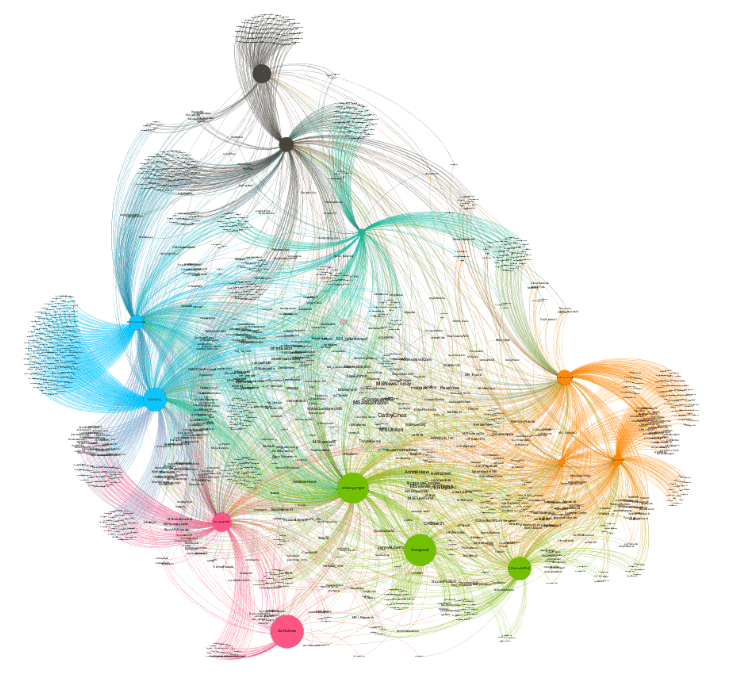The use of key opinion leaders (KOLs) has been a staple of life sciences business strategy for decades. Commercial and medical teams routinely identify and engage KOLs for research, publishing, and speaking, among other tasks. Patient advocacy teams regularly partner with patient support groups on mutually beneficial projects. Few industry executives question the value of these activities. Yet, few firms have adequately responded to the rise of the Digital Opinion Leader (DOL). As medical professionals and patients now rely on “peer-to-peer” input found online as a primary information source, DOLs are becoming a “must have” element in tactical plans.

The identification efforts of life sciences DOLs tend to be fragmented and often fail to yield a repeatable process that can generate rich and actionable profiles. Similarly, DOL engagement is often constrained to one-off projects, such as blogger summits, versus a sustained, continuous process of relationship building. The lack of clear organizational roles and guidelines within life sciences firms also limits potential impact. This is unfortunate because the emergence of the DOL is a major force for life sciences peer-influence programs.
A traditional KOL has influence in terms of the articles written or the conferences at which they speak, but only a DOL has the outsize reach made possible through social media. Currently, DOLs and KOLs exist in largely different universes with little overlap. Typically, less than 20% of KOLs will also have a social media presence and just a handful will rank alongside other DOLs in terms of online reach.
Finding DOLs
A more systematic approach to DOL identification and engagement is possible. We suggest the following steps be taken:
1. Segment Stakeholders
Knowing your customer is vital in the healthcare industry, both from a regulatory and planning perspective. A DOL who is also a physician must be treated differently from a DOL who is a patient or an accredited journalist, even though the subject matter and online audiences may be very similar. Influencer tools designed primarily for non-health industries rarely consider this requirement and measure influence without particular concern for the background and profession of the DOL. Look for a good consulting partner to bring databases and segmentation models that are customized for life sciences’ needs.

2. Profile and Prioritize Influencers
A DOL with a massive following does not necessarily represent the best opportunity—a subject matter expert DOL may attract a small, but important audience of specialist followers. It’s vital to seek out DOLs with interests that align closely to business objectives. For example, in the case of a pharmaceutical company launching an innovative drug, DOLs with a track record of contributing content around new therapies in the relevant disease area would be potential targets.
All the work that has been done to understand the online community of interest is now used to identify and prioritize DOLs that are both relevant and likely to engage with brand or company objectives. Second- and third-tier influencers that would have been passed over by simple “top influencer” lists may now reveal themselves to be the ideal partners. Detailed profiles of individual DOLs should be generated at this stage, providing insights around favored topics and preferred channels, but also uncovering specific areas of opportunity for engagement.
3. Develop a DOL Engagement Strategy
Many life sciences companies have some experience engaging with DOLs. Unfortunately, most of these projects have failed to drive impact. Common reasons include identifying influencers but not taking steps to engage, lack of clear internal guidelines for engaging with DOLs, focus on one-off activities versus sustained relationship building, failing to find mutually beneficial projects, and unclear roles and responsibilities. In many cases, life sciences firms don’t have the expertise in-house to carry out a DOL program from end to end.
Engaging with DOLs
Three tips for pharma leaders who wish to engage DOLs properly:
1. Define areas of mutual benefit to both DOLs and the life sciences firm. Stay away from single-brand promotional projects. Focus on franchise building, disease education, patient support, clinical trial, services provision, and other projects that are patient or provider-centric.
2. Think relationship versus tactic. DOLs are most attracted to a mutually beneficial relationship that grows over time. Most are not interested in one-off meetings or summits. The more a life sciences firm invests in the relationship, the greater the payback in terms of influence. The smartest companies think about how to integrate DOLs into their strategy and tactics over time.
3. Design DOL processes that scale. DOL engagement represents a new capability for life sciences firms and with that come a host of organizational considerations including role definition (who owns different DOL relationships), process (how we can we engage DOLs offline and directly through social media), regulatory (what are rules of the road for DOL engagement), and data management (how will we integrate DOL profiles into our CRM databases). The most mature organizations create standard processes for DOL engagement so the activity can scale.
The above steps require an intricate knowledge of digital data sources, along with a solid understanding of the disease area in question and pharma regulations. For pharma companies without in-house expertise, a partner with both the analytics and consulting capabilities would be ideal to ensure DOL research is fully linked to business strategy.
By properly involving DOLs in the creation of programs and by regularly sharing with them, life sciences communicators have a built-in megaphone that can expand the authenticity and reach of their messages, as DOLs willingly amplify messages across their social networks.
The applications of DOLs to life sciences firms—specifically in achieving communication objectives—are extensive, from early research to commercialization on both the medical and patient sides. Examples include using DOLs for clinical trial recruitment, for disease perspectives, on advisory boards to shape education and support programs, for feedback on marketing messaging or tactics, as peer-mentors for patient support programs, judges for contests, as amplifiers of disease awareness, patient motivation messages, patient support content, and tools.




